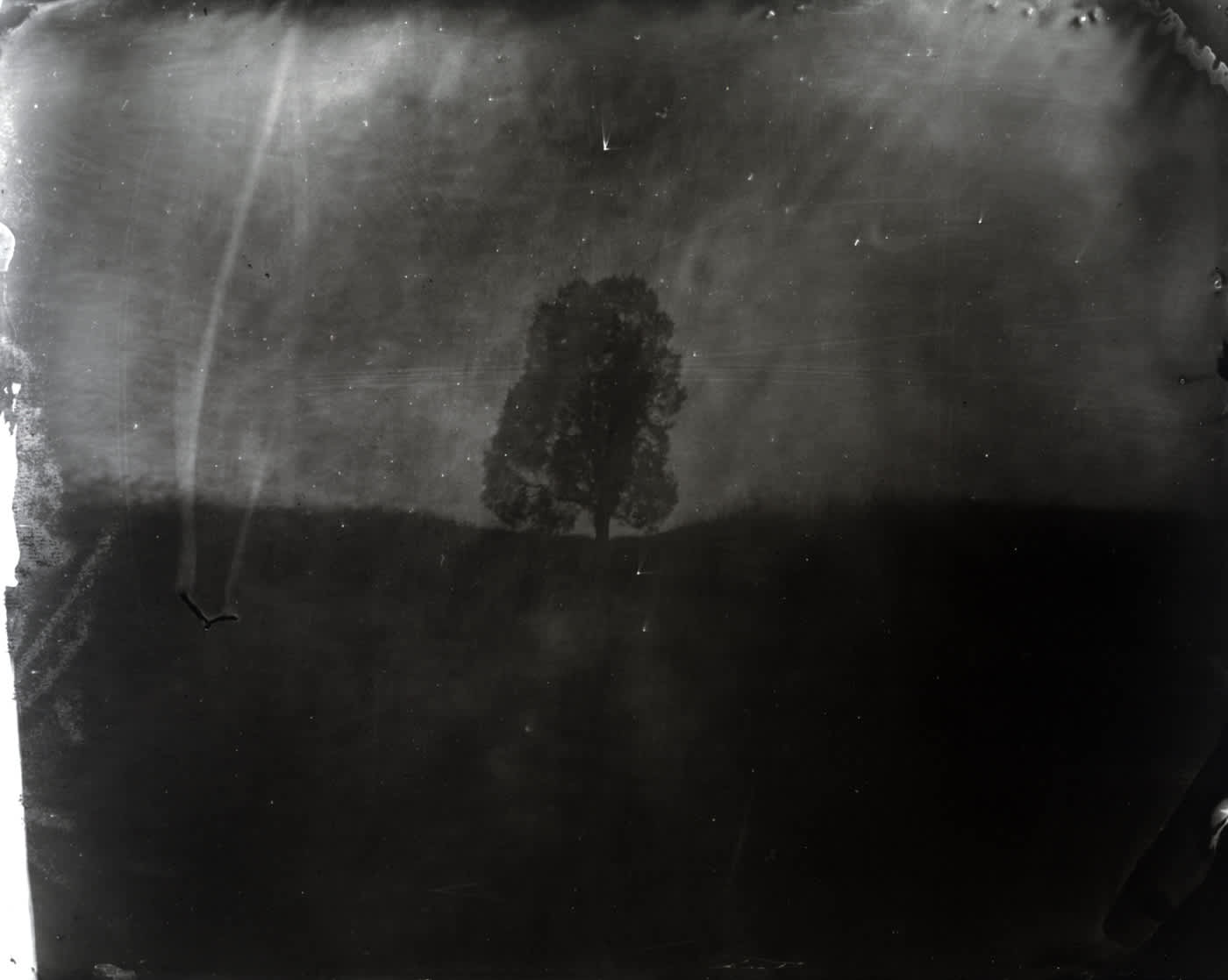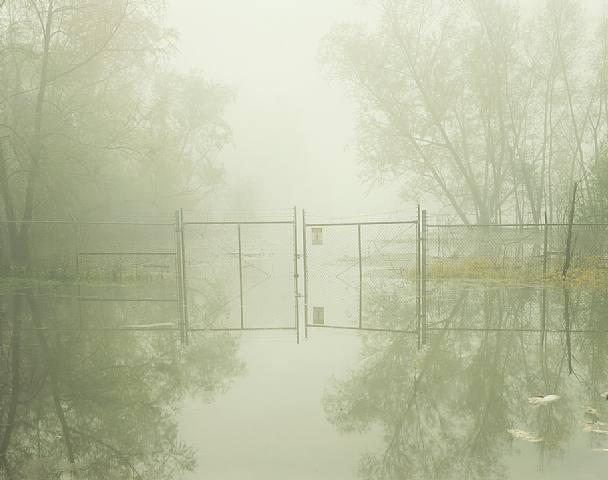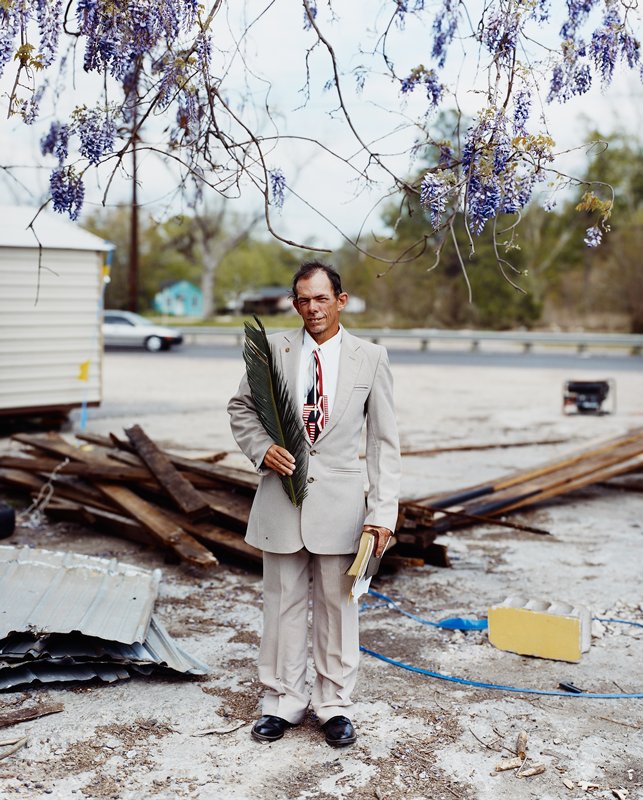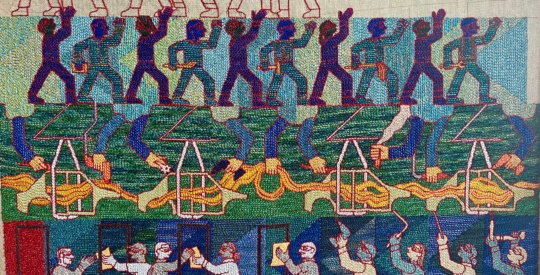
Quite often a photograph is taken to capture a fleeting moment. It is a record of that specific time, and serves as a memento, a reflection, reference, and observation. Yet, the photographs selected for “Southern Exposure: Portraits of a Changing Landscape,” on view through August 30 at the Museum of Contemporary Art in Jacksonville, Florida, appear to deny the singularity of an instance for the purpose of presenting a period or span of time, where outcomes and effects are inconclusive and untold.
This exhibition consists of more than 70 photographs, depicting work by seven well established and midcareer artists who have contributed to the oeuvre of Southern expression and situational documentary photography. Works by William Christenberry, Deborah Luster, Sally Mann, Jeanine Michna-Bales, Richard Misrach, Andrew Moore, and Alec Soth explore a range of subjects, from the broadly historical to personal narratives, from death and decay to displacement and escapism, and from the theatrical to the metaphysical.
Regionally, there has been support for exhibitions of this type, such as the “Picturing the South” initiative launched by the High Museum of Art in Atlanta in the mid ’90s with an endowment and mission to support artists and grow the museum’s collection. Sally Mann, Richard Misrach, and Alec Soth have all been commissioned for the project, and currently have work included in “Southern Exposure” at MOCA.

As MOCA is an institution that provides cultural influence and resources in Florida and the Southeastern region, the programming of this exhibition seems to capitalize on perspectives of mutual affinity. It also, as the title suggests, is anthropomorphizing and attaching specific qualities to a more expansive subject of the landscape. In this activity, the artists selected have all practiced a mode of extensive research, spanning various forms of measurement from periods of time as long as 27 years, to distances of thousands of miles, to pounds of pollution at the hands of hundreds of factories. And though the title “Southern Exposure” is an apt pun on photography, it could also be a description of how the artists have investigated subjects that uncover vulnerability and suffering, but also, in some cases, offer comfort and hope.
The artists represented in the show have very different personal connections to the South –not all originate from the region. Virginia-based Sally Mann, whose career has been distinguished by her penchant for capturing raw, emotive, and sometimes unnerving photographs, has a series of large, haunting landscapes that seem uninhabited and forgotten. In truth, they are what remain of some of the bloodiest battle sites of the Civil War. Adapting a 19th-century wet plate collodion technique, Mann’s process reveals solution marks and textural density that add to the obscurity of the photographic atmosphere and suggest the tangled history of these locations.
Also marking tragic locales of death are Deborah Luster’s series Tooth for an Eye: A Chorography of Violence in New Orleans Parish, for which she photographed sites in New Orleans where homicides took place. Each circular photograph provides an account of the place, names, and details of the homicides, thereby humanizing the statistics and community impact. As adrenalin, pain, and tragedy seem to extend moments, Luster uses long exposures to suggest a link of the living to the dead.
From bloodshed to the desecration of the environment, Richard Misrach’s monumental photographs of “Cancer Alley” incriminate the over 150 factories along the Mississippi River from Baton Rouge to New Orleans that have displaced individuals, perpetuated poverty, and corrupted the environment with irreparable levels of toxicity. In these images, the landscape is an enigmatic perversion.

Conversely, and poetically, Dallas-based artist Jeanine Michna-Bales’s series Through Darkness to Light: Seeking Freedom on the Underground Railroad, is a narrative look at the moonlit scenery of freedom seekers. The ambiguity of these darkened locations heightens their intensity, and the selected features of limited light are poignant beacons of salvation. Also dramatizing the notion of journey, Alec Soth’s photographs shot with a large-format 8-by-10 camera traverse five years of a personal trek along the Mississippi River, from Minnesota (where he lives) to Baton Rouge, in his series Sleeping by the Mississippi. In Soth’s photographs, the vagrants, drifters, convicts, and countrymen who inhabit the once cultivated waterway are transformed into storytellers and dreamers. Soth’s odyssey of encounters is one of the few works in the exhibition that features typical Southern scenery.
In a similar fashion, Andrew Moore’s photos tell the story of architecture. He demonstrates that, with the right light and compositional framing, he can elevate tired structures and worn-out ruins into fascinating settings. By setting out each year to rediscover his Southern heritage, William Christenberry uses photography to energize his studio practice, which also includes painting and sculpture. In the 20 photographs of House and Car, Near Akron, Alabama, the subject of time unfolds over 27 years of documenting a car and house that become neglected and then abandoned, visually integrating into the surrounding landscape.
The significance of the “Southern Story” and the effects of the passage of time are quite palpable throughout these photographs, easily identified by the regional public. However, if a universal concept of “Southern” is assumed, can this cultural heritage survive becoming a quotation of itself? How can a new contemporary viewpoint for the South of today be defined by revisiting the past that presents decay, abandon, and a retold memories?





